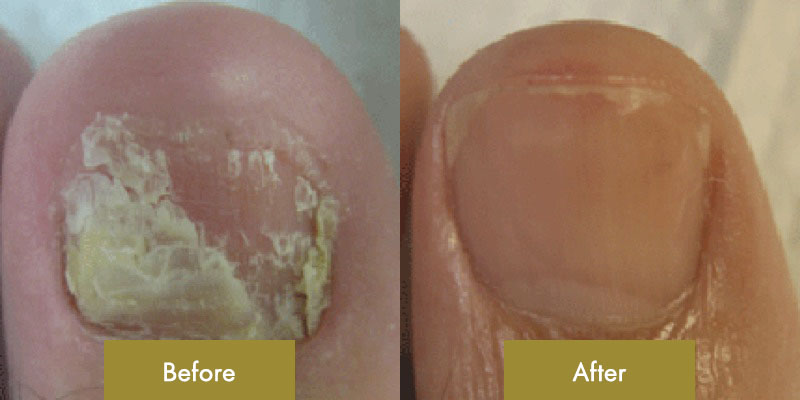What is onychomycosis?
Onychomycosis (also known as tinea unguium) is a fungal infection that affects the nails. Fungal infections develop gradually over time, so any direct changes in the shape, colour or texture of the nails may be imperceptible and go unnoticed for a while.
There are many different causes of fungal nail infections, and each cause has a treatment of its own. Despite the fact that many of the causes of a fungal nail infection are preventable, some risk factors increase the likelihood of developing it. You’re more likely to develop a fungal nail infection if you:
- have diabetes
- have a condition affecting the blood vessels
- are an older woman
- use artificial nails
- swim in a public swimming pool
- have stitches on a nail
- have wet toes and fingers for extended time
- have weakened immune system
- wear closed shoes, such as sports shoes or boots.
Fungal infections are more common on the toenails as compared to the fingernails.
Onychomycosis can be treated in most cases; however, the fungus may reappear after treatment completion or cause future complications.
How is onychomycosis recognised?
A fungal infection of the nails may affect part of the nail, the whole nail or several nails.
Visible Signs
- scaling under the nail (local hyperkeratosis)
- white or yellow streaks on the nail (lateral onychomycosis)
- a crumbling corner or tip of the nail (distal onychomycosis)
- flaking white areas on the nail’s surface (may include pits in the nail)
- yellow spots at the bottom of the nail (proximal onychomycosis)
- loss of nails
Common Signs
- distorted nails
- an odour coming from the infected nail
- brittle or thickened nails
Tips for the prevention of fungal infections of the nails
Making a few simple lifestyle changes can help prevent a fungal infection of the nails. Taking good care of your nails by keeping them well trimmed and clean is a good way to prevent infections. You should also avoid injuring the skin around your nails. If you’re going to have damp or wet hands for an extended amount of time, you may want to wear rubber gloves.
Other tips to prevent fungal infections of the nails include:
- use antifungal sprays or powders regularly
- wash your hands after touching infected nails
- dry your feet well after showering, especially between your toes
- get manicures or pedicures from trustworthy salons
- wear socks that minimise moisture
- avoid being barefoot in public places
- reduce the use of artificial nails and nail polish









